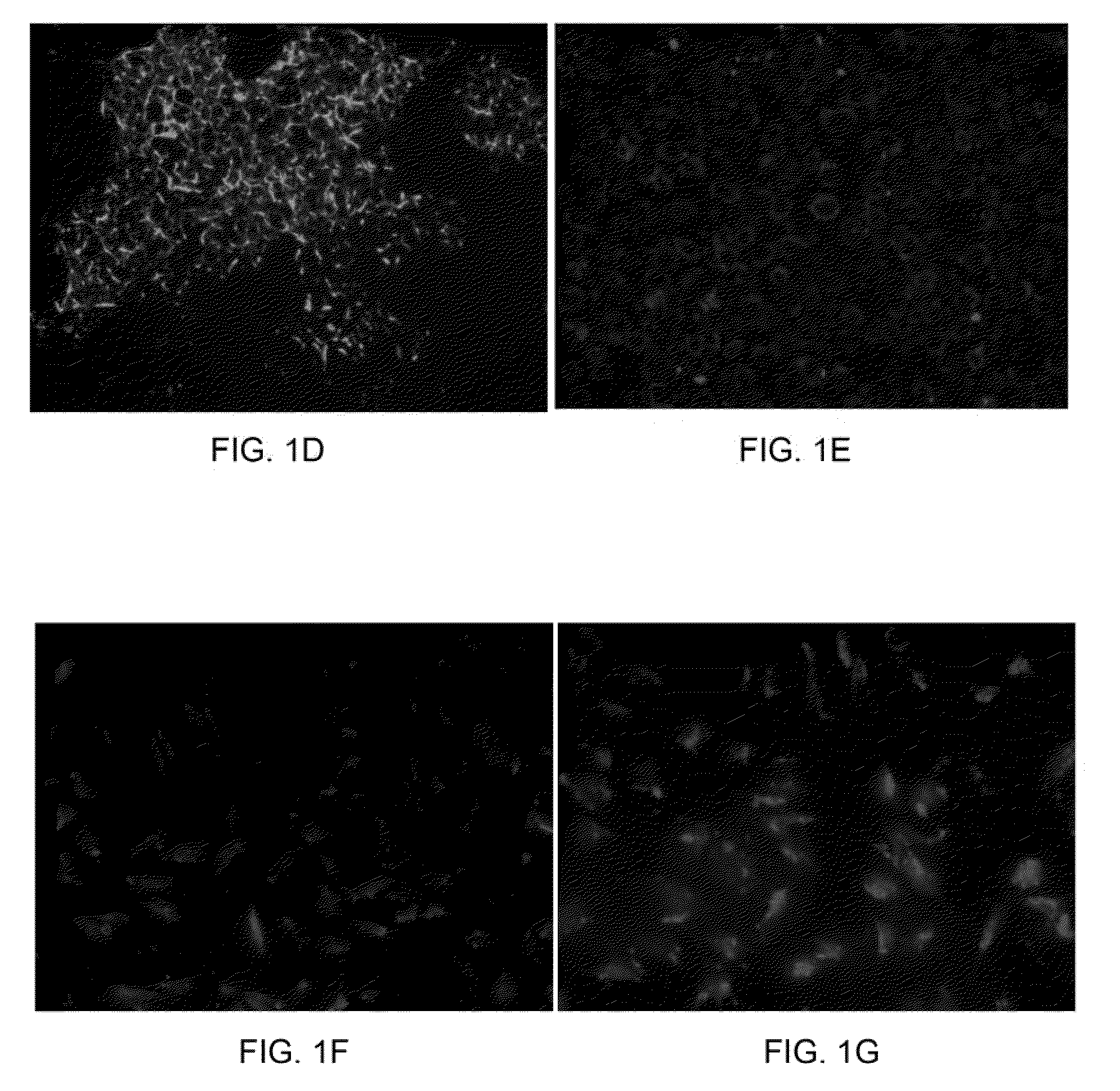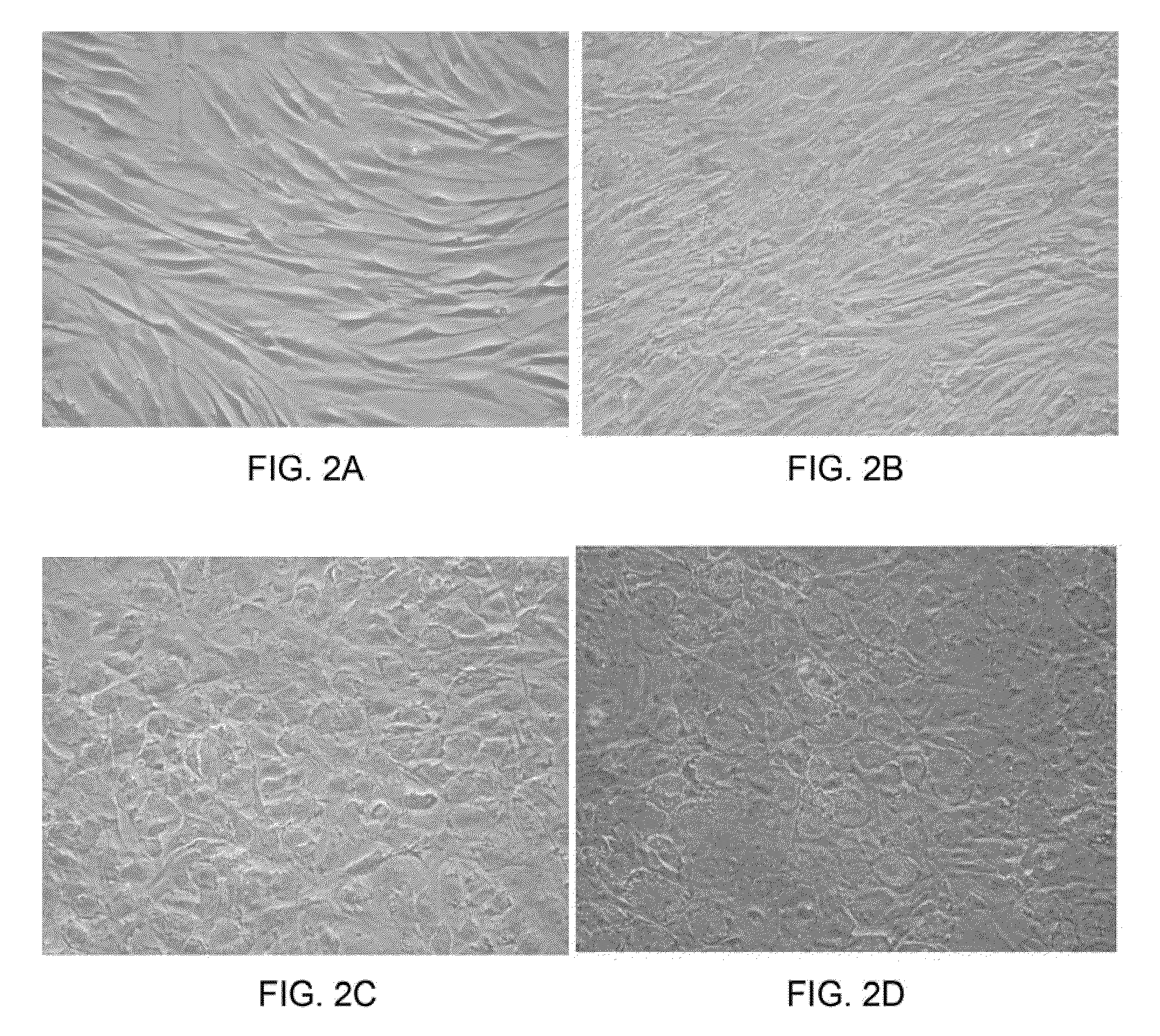Systems and methods for making hepatocytes from extrahepatic somatic stem cells and use thereof
a somatic stem cell and hepatocyte technology, applied in the field of hepatocytes, can solve the problems of difficult to obtain human hepatocytes in large numbers for clinical applications, and difficult to obtain primary cultures of hepatocytes that both proliferate and maintain liver-specific functions in vitro
- Summary
- Abstract
- Description
- Claims
- Application Information
AI Technical Summary
Problems solved by technology
Method used
Image
Examples
example 1
Materials and Methods
[0045]Isolation of human somatic stem cells. Human bone marrow was aspirated from the femur of healthy donors during fracture surgery with informed consent. Total mononuclear cells were obtained by negative immuno-depletion of CD3, CD14, CD19, CD38, CD66b, and glycophorin-A positive cells using antibodies (RosetteSep®, StemCell Technologies, Vancouver, BC, Canada), followed by Ficoll-Paque (Amersham-Pharmacia, Piscataway, N.J., USA) density gradient centrifugation (1.077 g / cm3), and plated in tissue culture flasks (Becton Dickinson, Franklin Lakes, N.J., USA) with Iscove's modified Dulbecco's medium (IMDM, Gibco BRL, Grand Island, N.Y., USA) and 10% Fetal Bovine Serum (FBS, Hyclone, Logan, Utah, USA) supplemented with 10 ng / ml epidermal growth factor (EGF; R&D Systems, Minneapolis, Minn., USA), 10 ng / ml fibroblast growth factor-2 (FGF-2; R&D Systems), 100 U penicillin, 1000 U streptomycin, and 2 mM L-glutamine (Gibco BRL). Non-adherent cells were removed by medi...
example 2
Materials and Methods
[0055]Generation of hepatocytes from extrahepatic somatic stem cells. Extrahepatic somatic stem cells were first isolated according to the procedures as aforementioned. To generate hepatocytes from the extrahepatic somatic stem cells, stem cells were seeded at about 1.7×104 cells / cm2 and treated sequentially with the following media: Day 0-9: DMEM / F12 supplemented with 20 ng / ml hepatocyte growth factor (HGF; R&D Systems), 10 ng / ml FGF-2 (R&D Systems), 10 ng / ml FGF-4 (R&D Systems). Day 9-12: DMEM / F12 supplemented with 20 ng / ml oncostatin M (OSM; R&D Systems), 20 ng / ml HGF, 2 ng / ml FGF-2, 2 ng / ml FGF4, 10 ng / ml bone morphogenetic protein 2 (BMP-2; R&D Systems). Day 12-28: DMEM / F12 supplemented with 20 ng / ml OSM, 1 ng / ml HGF, 0.1 ng / ml FGF-1, 0.1 ng / ml FGF-2, 0.1 ng / ml FGF-4, 10−6 M dexamethasone (Sigma-Aldrich), 1×ITS+ premix supplement (Becton-Dickinson), 0.61 g / L nicotinamide (Sigma-Aldrich), 200 mM ascorbic acid (Sigma-Aldrich). Media changes were performed at ...
PUM
| Property | Measurement | Unit |
|---|---|---|
| density | aaaaa | aaaaa |
| temperature | aaaaa | aaaaa |
| density | aaaaa | aaaaa |
Abstract
Description
Claims
Application Information
 Login to View More
Login to View More - R&D
- Intellectual Property
- Life Sciences
- Materials
- Tech Scout
- Unparalleled Data Quality
- Higher Quality Content
- 60% Fewer Hallucinations
Browse by: Latest US Patents, China's latest patents, Technical Efficacy Thesaurus, Application Domain, Technology Topic, Popular Technical Reports.
© 2025 PatSnap. All rights reserved.Legal|Privacy policy|Modern Slavery Act Transparency Statement|Sitemap|About US| Contact US: help@patsnap.com



